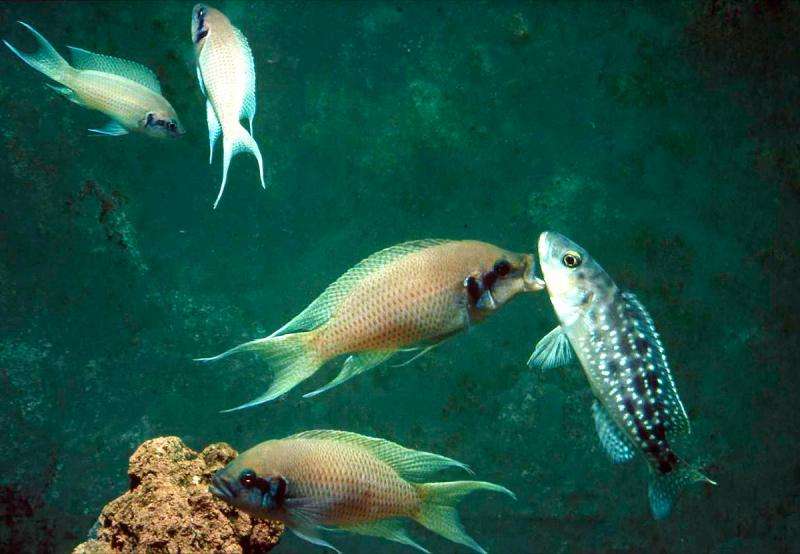A cichlid breeder attacks a predator. Credit: Michael Taborsky, University of Bern.
Variation in social organization and behavior of highly social animals like cichlids is primarily explained by predation risk and related ecological factors. This stresses the significance of predation for social evolution.
Sociality is a ubiquitous feature of life, but the reasons why animals cluster together can vary. In nature, there is great diversity in social organization and in the complexity of interactions among group members. It is widely accepted that high predation risk may select for group living, but predation is not regarded as an important driver of social complexity.
This view neglects the important effect of predation on dispersal and offspring survival, which may require cooperation among group members. The significance of predation for the evolution of social complexity can be well illustrated by behavioural and morphological adaptations of highly social animals showing division of labour, such as ants and cooperatively breeding fishes like cichlids.
Long-time study of eight fish populations
In several species of cichlids in Lake Tanganyika, for example, groups consist of many individuals differing in size, age, dominance rank and relatedness. Group members typically cooperate in brood care, territory maintenance and defence, and they decide about their cooperative effort in dependence of relatedness to beneficiaries and the outcome of negotiations with other group members. Importantly, the form and function of social organization varies considerably among different populations of the same species, which enables to study the significance of ecological factors for social organization.
In a long-term study at Lake Tanganyika, a team of the Behavioural Ecology Division of the University of Bern in collaboration with researchers from the Universities of Groningen (Netherlands), Cambridge (UK) and Osaka (Japan), compared the ecology and social organization of eight populations of Neolamprologus pulcher, a cichlid fish commonly called "the princess of Lake Tanganyika". These fish arguably represent the pinnacle of social evolution in poikilothermic vertebrates.
Small helpers maintain shelter, large ones fight predators
The results of this study have now been published in the Proceedings of the National Academy of Sciences of the United States of America (PNAS). They show that variation in social organization and behaviour of these fish is primarily explained by predation risk and related ecological factors. Remarkably, predation risk affects group composition much more than group size, with inverse effects on small and large group members. High predation risk and shelter limitation causes groups to contain many large but only few small helpers, which is exacerbated under low population densities. These effects reflect increased costs of dispersal and reduced benefits of independent breeding. The ecological context also affects the behaviour of group members, with small helpers specializing in shelter maintenance and large helpers in predator defence. The latter is also influenced by the proximity to neighbours, revealing that not only living in groups can be important for individual survival, but also the assembly of groups in colonies.
More information: Frank Groenewoud et al. Predation risk drives social complexity in cooperative breeders, Proceedings of the National Academy of Sciences (2016). DOI: 10.1073/pnas.1524178113
Journal information: Proceedings of the National Academy of Sciences
Provided by University of Bern
























